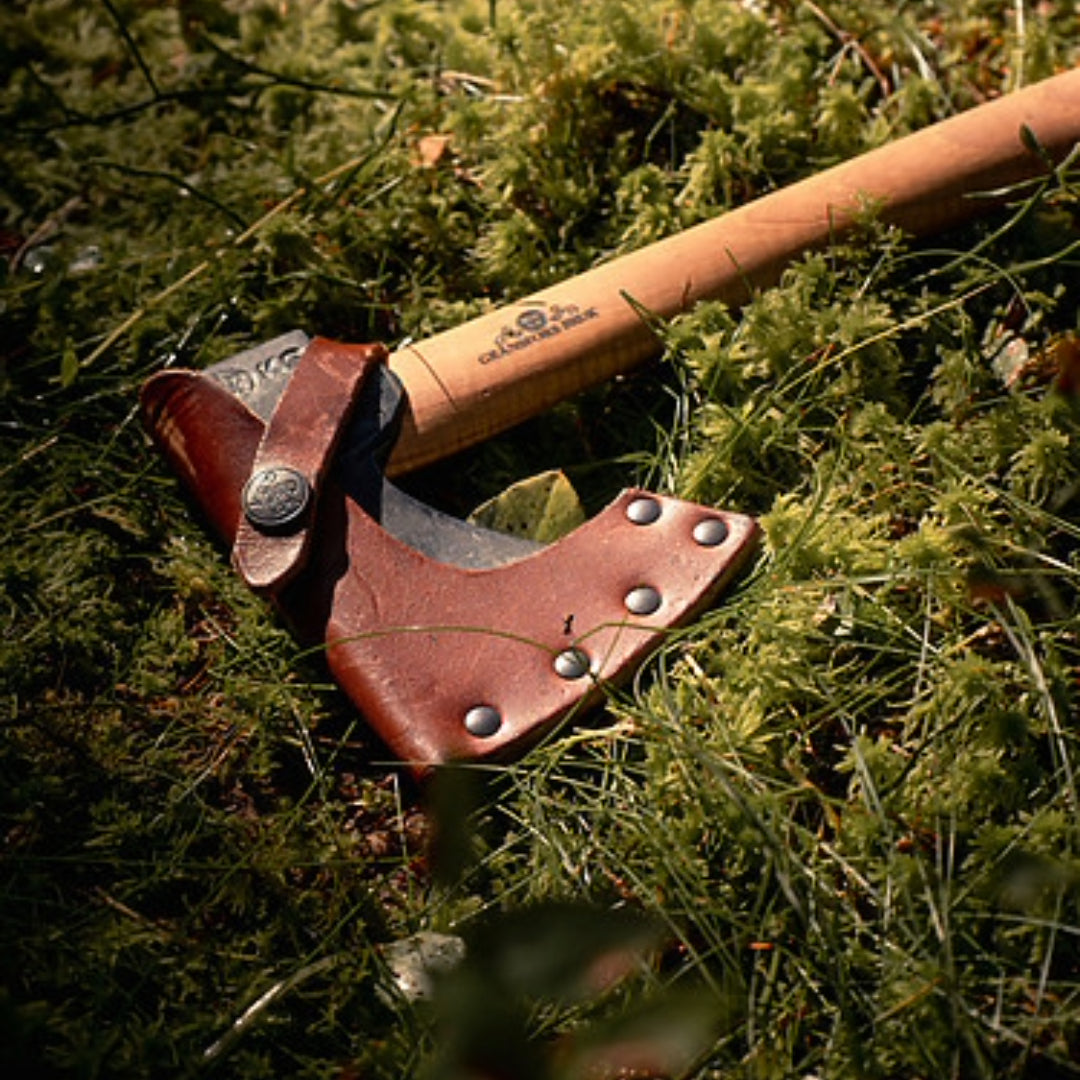🪓 The Real Difference Between Cheap Axes and Premium Swedish Steel
When it comes to axes, it’s easy to think that
steel is steel. After all, they all chop wood — right?
Not exactly.
There’s a world of difference between a $60 hardware-store axe and a hand-forged Gränsfors Bruk or Hultafors. The difference isn’t just in the price — it’s in the performance, the craftsmanship, and how long your tool will last.
If you’ve ever wondered why premium Swedish axes cost more or if they’re worth it, this guide breaks it down clearly.

1. The Steel: Swedish Carbon Steel vs. Mass-Produced Alloy
The heart of any axe is its steel. Cheap axes are typically made from generic alloys that are easy to stamp and machine but lack hardness consistency. These steels can’t hold an edge for long, forcing you to sharpen constantly.
Premium Swedish axes, like those from Gränsfors Bruk, Hults Bruk, and Hultafors, are hand-forged from high-carbon Swedish steel. Each billet is chosen for its purity and balance of hardness and toughness.
-
Edge retention: Swedish steel keeps its sharpness even after hours of splitting or carving.
-
Resilience: The metal flexes slightly on impact instead of chipping or cracking.
-
Grind precision: A hand-forged bevel creates a true wedge that bites deeper with less effort.
That’s why an axe from Sweden can last a lifetime — and often longer.

2. Forging vs. Casting: Why Hand-Forged Matters
Mass-produced axes are stamped or cast by machine. It’s fast, but it introduces weak points in the grain structure of the metal. These axes often look perfect out of the box but lose shape or balance after heavy use.
Swedish axe makers use traditional hand-forging techniques that compact the steel, aligning the grain with the shape of the axe head. This makes the metal denser and significantly stronger.
Every hammer strike refines the structure of the steel — a process that simply can’t be replicated by automation. That’s why a Gränsfors or Hultafors axe feels “alive” in your hands: perfectly balanced, naturally weighted, and built to work with you, not against you.

3. The Handle: Hickory vs. Generic Hardwood
A great axe isn’t just about steel. The handle is your connection to the tool.
Cheap axes often use low-grade hardwood that hasn’t been dried properly. These handles are prone to warping, cracking, or splintering — especially when exposed to moisture.
Premium Swedish axes use American hickory — a dense, flexible wood that absorbs shock and offers exceptional control. The handle is shaped for comfort, not mass production, and finished with linseed oil to protect the grain and improve grip.
You’ll also notice the fit: each head is mounted with precision and secured using wood and steel wedges, not glue or resin. That means your handle stays tight season after season.
4. Edge Geometry and Performance
Ever wonder why a cheap axe feels like it’s “bouncing” off the wood? It’s all about geometry.
Mass-produced axes use a
uniform, blunt edge that’s easier to manufacture but inefficient.
A properly forged Swedish axe has a
tapered convex edge that slices into the wood rather than forcing it apart.
This difference means:
-
Cleaner cuts
-
Less fatigue
-
More control
-
Longer edge life
It’s not about swinging harder — it’s about cutting smarter.
5. Longevity and Value Over Time
A cheap axe might get the job done — for a while. But after a few seasons, the edge dulls, the handle loosens, and the head rusts. You’ll end up replacing it.
A
premium Swedish axe is designed to be
maintained, not replaced.
You can re-hone the edge, refit the handle, and pass it down to the next generation.
The cost per year of use ends up far lower than a string of broken budget axes.
At Axeman.ca, many of our customers still use Gränsfors or Hultafors axes that are decades old — proof that quality is an investment, not an expense.
6. Craftsmanship and Heritage
Every Gränsfors and Hultafors axe is signed or stamped by the blacksmith who forged it. That signature isn’t decoration — it’s accountability and pride in workmanship.
These smiths train for years, following techniques refined since the 1600s. When you buy a Swedish axe, you’re not just buying a tool — you’re holding a piece of living history.
7. The Feel in Your Hands
Pick up a cheap axe, then a Gränsfors Bruk. You’ll notice the difference immediately.
The balance, the swing, the sound of steel meeting wood — it all feels right.
That’s not marketing. That’s physics, metallurgy, and 400 years of experience working together.
🔧 The Bottom Line
| Feature | Cheap Axe | Swedish Axe (Gränsfors, Hultafors, Hults Bruk) |
|---|---|---|
| Steel | Generic alloy | High-carbon Swedish steel |
| Edge Retention | Dulls quickly | Holds edge for years |
| Forging | Machine-stamped | Hand-forged |
| Handle | Soft hardwood | Premium hickory |
| Fit & Finish | Inconsistent | Precision-fitted |
| Longevity | 2–3 years | Lifetime+ |
🪓 Shop Premium Swedish Axes at Axeman.ca
Ready to feel the difference for yourself?
Explore our full lineup of
Gränsfors Bruk and
Hultafors Axes — each one hand-forged in Sweden and built to last a lifetime.
Whether you’re splitting wood, felling trees, or carving campfire tools, your axe is only as good as the steel it’s made from. Choose quality, and it’ll reward you for decades to come.













































Leave a comment (all fields required)